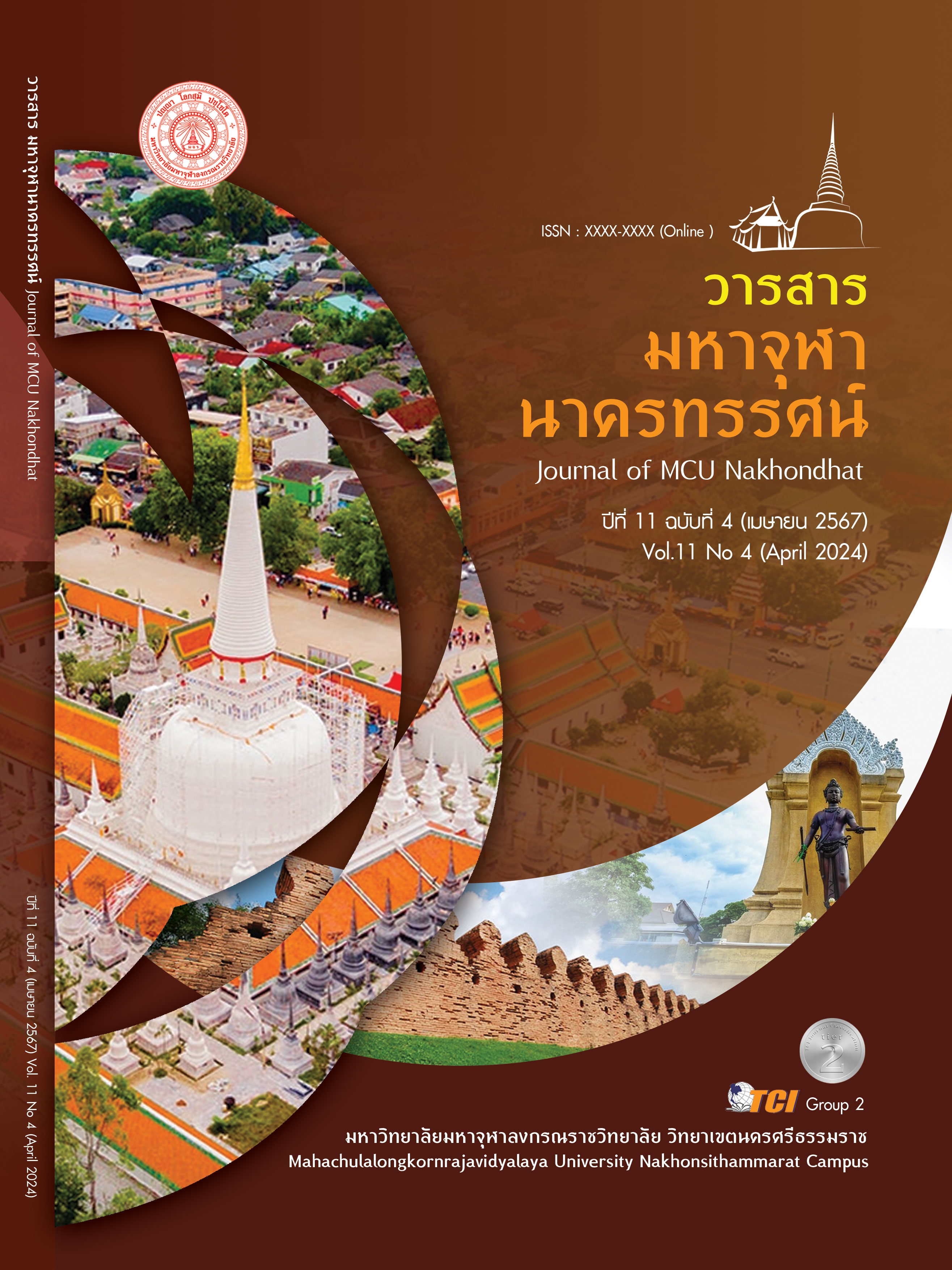FACTORS INFLUENCING THE DECISION TO PURCHASE PRODUCTS PRODUCED BY COMMUNITIES OF CONSUMERS IN THAILAND
Main Article Content
Abstract
The purpose of this research is to study the factors that influence consumer decisions to purchase community - produced products in Thailand, by analyzing the marketing mix factors that affect the selection of community-produced products and testing the relationship between personal factors and the selection of community - produced products in Thailand. This study is quantitative research. The data was surveyed using questionnaires from 400 samples of consumers of products produced by communities living in Thailand. The data was analyzed using statistics, frequency, percentage, mean, standard deviation, and hypothesis testing using Chi - square test. The research results found that the consumers who purchase community-produced products are mostly adults
40 - 54 years old. They buy food products the most, there is a cost per purchase of approximately about 301 - 500 baht, places to buy products are souvenir shops, and receive news information from online channels. The reason for choosing to buy products from the community is to help promote and support Thai products. The overall marketing mix factor affects product selection produced by the community at a high level with an average of 4.17. The findings indicate that the marketing mix factors significantly influence product selection with an average of 4.22, with consumers prioritizing price. Furthermore, the analysis of personal factors revealed that gender, age, education level, monthly income, number of family members, and residential areas are statistically significant in influencing consumer behavior towards community - produced products. However, marital status and occupation did not show statistical significance.
Article Details

This work is licensed under a Creative Commons Attribution-NonCommercial-NoDerivatives 4.0 International License.
References
กรมการพัฒนาชุมชน กระทรวงมหาดไทย. (5 ตุลาคม 2566). ประเภทผลิตภัณฑ์ OTOP. เข้าถึงได้จาก https:// otop.cdd.go.th/products
เจกิตาน์ ศรีสรวล และ ณัฐพร อิฐสุวรรณ กัง. (2563). ปัจจัยที่มีผลต่อพฤติกรรมการซื้อสินค้า OTOP ของนักท่องเที่ยวตลาดน้ำบางคล้า อ.บางคล้า จ.ฉะเชิงเทรา. วารสารวิชาการศรีปทุม ชลบุรี, 16(4), 79-89.
ชุติมา นิ่มนวล. (2563). ปัจจัยที่มีผลต่อพฤติกรรมการเลือกซื้อผลิตภัณฑ์ OTOP กรณีศึกษา : ผลิตภัณฑ์ OTOP จังหวัดพระนครศรีอยุธยา. วารสารวิทยาการจัดการปริทัศน์, 22(1), 27-34.
ณัตตยา เอี่ยมคง. (2565). ปัจจัยส่วนผสมทางการตลาดที่มีผลต่อการตัดสินใจเลือกซื้อสินค้าวิสาหกิจชุมชนผ่านระบบพาณิชย์อิเล็กทรอนิกส์. วารสารเทคโนโลยีสื่อสารมวลชน มทร.พระนคร, 7(1), 9-20.
พรพิมล สัมพัทธ์พงศ์. (2559). พฤติกรรมและความพึงพอใจของผู้บริโภคที่มีต่อผลิตภัณฑ์สินค้าหนึ่งตำบล หนึ่งผลิตภัณฑ์ (OTOP) ในเขตอำเภอบางกรวย จังหวัดนนทบุรี. วารสารบัณฑิตศึกษา มหาวิทยาลัยราชภัฏวไลยอลงกรณ์ ในพระบรมราชูปถัมภ์, 10(1), 62-71.
ศศิชา หมดมลทิน. (2563). ยกระดับฐานรากด้วยสินค้าชุมชน. หน่วยวิเคราะห์เศรษฐกิจฐานราก ส่วนเศรษฐกิจฐานราก ศูนย์วิจัยธนาคารออมสิน. เรียกใช้เมื่อ 5 ตุลาคม 2566 จาก https://www.gsbresearch.or.th/ wp-content/uploads/2020/03/GR_hotissue_yok_ra_ darp_1_63_ detail-1.pdf
สำนักงานสภาพัฒนาการเศรษฐกิจและสังคมแห่งชาติ. (2562). แผนแม่บทภายใต้ยุทธศาสตร์ชาติ (2561-2580) (ฉบับแก้ไขเพิ่มเติม). เรียกใช้เมื่อ 5 ตุลาคม 2566 จาก http://nscr.nesdc.go.th/master-plans/
อุษณีย์ เส็งพานิช. (2562). ส่วนประสมทางการตลาดที่มีผลต่อการตัดสินใจซื้อเครื่องสาอางสมุนไพรของผู้บริโภคในอำเภอเมือง จังหวัดพิษณุโลก. วารสารวิทยาการจัดการมหาวิทยาลัยราชภัฏพิบูลสงคราม, 1(2), 103-117.
Armstrong, G. & Kotler, P. (2009). Marketing An Introduction (9th ed.). New Jersey: Pearson Education.
Schiffman, L. G., & Kanuk, L. L. (2007). Consumer behavior. (9th ed.). New Jersey: Prentice-Hall.
Yamane, T. (1967). Elementary Sampling Theory. New Jersey: Prentice Hall, Inc., Engle clips.


